GALAX Launches 2TB Hall Of Fame SSDs with Pre-Installed Heatpipes
by Anton Shilov on March 28, 2019 5:00 PM EST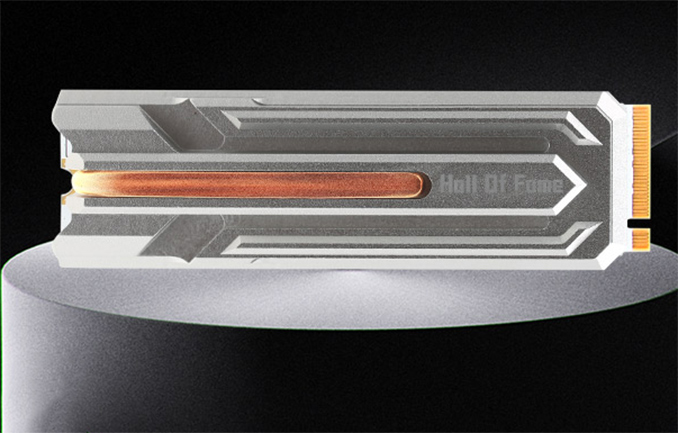
Palit Microsystems, which owns a number of GPU brands, entered SSD market a little more than two years ago with entry-level offerings to simplify product development and avoid competition. While Palit mainly sells ultra-high-end video cards and has loads of performance-minded clientele, for these customers the company is now rolling out its high-end GALAX Hall of Fame SSDs based on an advanced controller and featuring a sophisticated cooling system.
The GALAX Hall of Fame drives are based on Phison’s PS5012-E12 controller (NVMe 1.3, eight NAND channels with 32 CE targets, a DDR4/DDR3L interface for DRAM caching, LDPC, etc.), Toshiba’s BiCS 3D NAND flash (256 Gb 64L 3D TLC is the most likely), and feature a PCIe 3.1 x4 interface. The drives are offered in 512 GB, 1 TB, and 2 TB configurations, which to a large degree emphasizes their premium positioning.
Depending on the version, the HOF SSDs come in M.2-2280 module as well as HHHL card form-factors. The latter features a CNC-machined cooling system with a heat pipe to ensure consistent performance of the drives under high loads, whereas the former has a typical heatsink as well as RGB LEDs controlled using proprietary software.
When it comes to performance, the drives offer something that one would expect from a Phison PS5012-E12-powered device. The GALAX Hall of Fame SSDs claim to provide up to 3400 MB/s sequential read speeds, up to 3000 MB/s sequential write speeds (2 TB HHHL version, see the table below for exact specs of other drives), as well as up to 460K/660K random read/write IOPS. Meanwhile, it is noteworthy that similarly configured M.2 and HHHL drives are rated for different performance levels, which means that the SSDs are tuned differently (possibly because of heat dissipation of the controller).
| GALAX HOF SSDs Specifications | |||
| Capacity | 512 GB | 1 TB | 2 TB |
| Controller | Phison PS5012-E12 | ||
| NAND Flash | Toshiba 64-layer BiCS3 3D TLC (?) | ||
| Interface | PCIe 3.1 x4 | ||
| Form-Factor | M.2-2280 | M.2-2280 HHHL |
M.2-2280 HHHL |
| Sequential Read | 3.4 GB/s | 3.4 GB/s | 3.4 GB/s |
| Sequential Write | 2 GB/s | M.2: 2.8 GB/s HHHL: 3 GB/s |
M.2: 2.8 GB/s HHHL: 3 GB/s |
| Random Read IOPS | 400,000 | M.2: 400,000 HHHL: 440,000 |
M.2: 400,000 HHHL: 440,000 |
| Random Write IOPS | 540,000 | M.2: 600,000 HHHL: 660,000 |
M.2: 600,000 HHHL: 660,000 |
| Idle Power Consumption | < 900 mW (?) | ||
| PCIe L1.2 Idle | < 2 mW (?) | ||
| Pseudo-SLC Caching | Yes | ||
| DRAM Buffer | Yes | ||
| TCG Opal Encryption | Yes | ||
| Warranty | 3 years | ||
One interesting feature of the GALAX Hall of Fame SSDs is bundled Xtreme Tuner For SSD utility designed by the company. The program supports monitoring of the drive (temperature, endurance, etc.), can upgrade its firmware, and even optimize performance. Considering the fact that Phison usually supervises manufacturing of SSDs based on its controllers and essentially sells SSDs, not controller chips, the fact that GALAX now offers software for customization of its PS5012-E12-powered drives means that the company has done some additional R&D work and its products offer more than typical Phison-based SSDs do.
At present, the GALAX HOF SSDs are available primarily in China. It remains to be seen whether Palit decides to offer them in other countries and which trademarks they will carry.
Related Reading:
- The Silicon Power P34A80 SSD Review: Phison E12 With Newer Firmware
- CES 2019: GIGABYTE’s High-Performance Aorus PCIe and M.2 SSDs
- Phison: PS5012-E12 Controller in Mass Production, 20+ SSDs Incoming
- The Phison E12 Reference Design Preview: A Next-Gen NVMe SSD Controller
Source: GALAX, GALAX (via Momomo_US/Twitter)


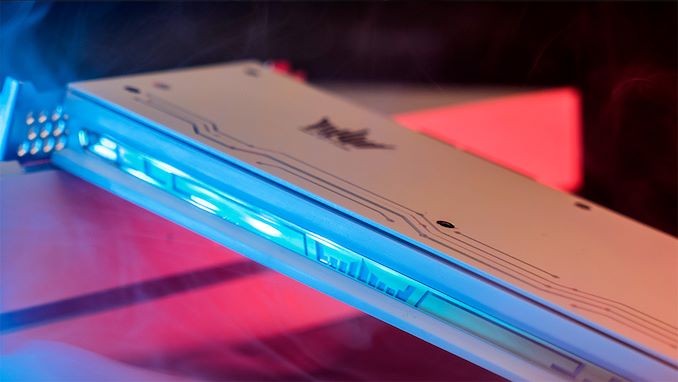
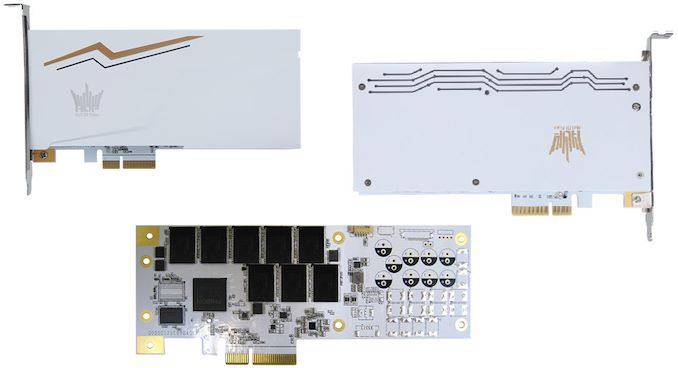
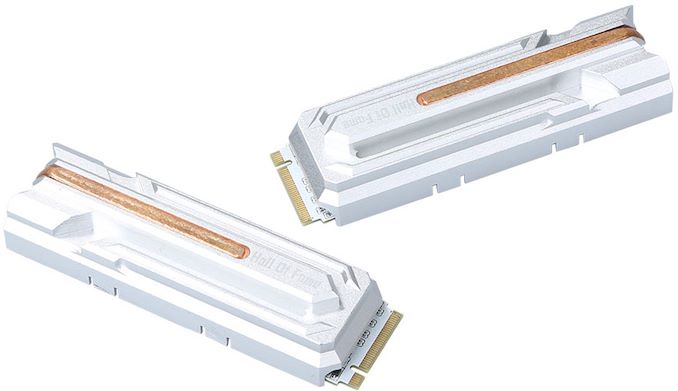
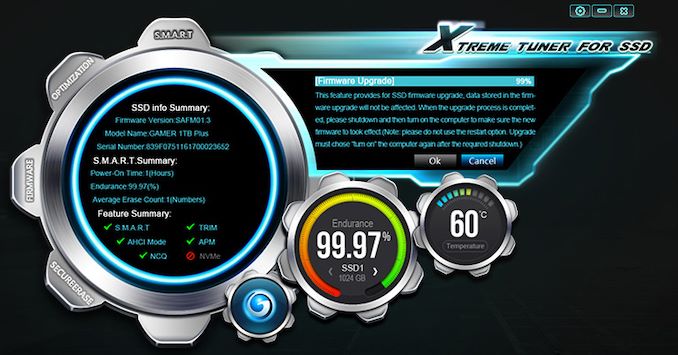









20 Comments
View All Comments
Beaver M. - Friday, March 29, 2019 - link
Without heat sink that wont do much.Ive been running heatsinks on my M.2 SSD for 2.5 years. Had to build a custom bracket to hold a 50mm fan blowing on it. That is much bigger than this solution.
paul sss - Friday, March 29, 2019 - link
why are there not endurance ratings on this drive what is Drive Writes Per Day (DWPD)JoeyJoJo123 - Friday, March 29, 2019 - link
Because that metric does not matter for their intended audience (gamers).If you want enterprise level endurance, buy enterprise grade SSDs.
sonny73n - Friday, March 29, 2019 - link
Someone please tell me how copper heatpipes transfer heat better than solid copper.Direct touch heatpipes? Lame marketing gimmick.
OolonCaluphid - Friday, March 29, 2019 - link
They do actually have a decent purpose, just not in this application. They use the phase change from liquid to vapor to enhance the heat draw from a component, then recondense it at the cool end of the pipe.piroroadkill - Tuesday, April 2, 2019 - link
Well, they do, because changing phase is a powerful effect. It takes a lot of energy to move a material into another state of matter, and then back again.MDD1963 - Friday, March 29, 2019 - link
A heat pipe on SSDs? GOod idea, we do *not* want that 3-4 watts getting out of control and heat soaking our cases!piroroadkill - Tuesday, April 2, 2019 - link
Well, the 3-4 watts is going into your case no matter what cooling the thing hasGunbuster - Friday, March 29, 2019 - link
The perfect complement to the 20 people nationwide who bought the Juggalo clown car video card...drajitshnew - Friday, March 29, 2019 - link
Considering the difference between the AIC and the m2, I wonder if the heat pipes EVEN TOUCH the controller, even with TIM. Might be something to test of they launch outside China